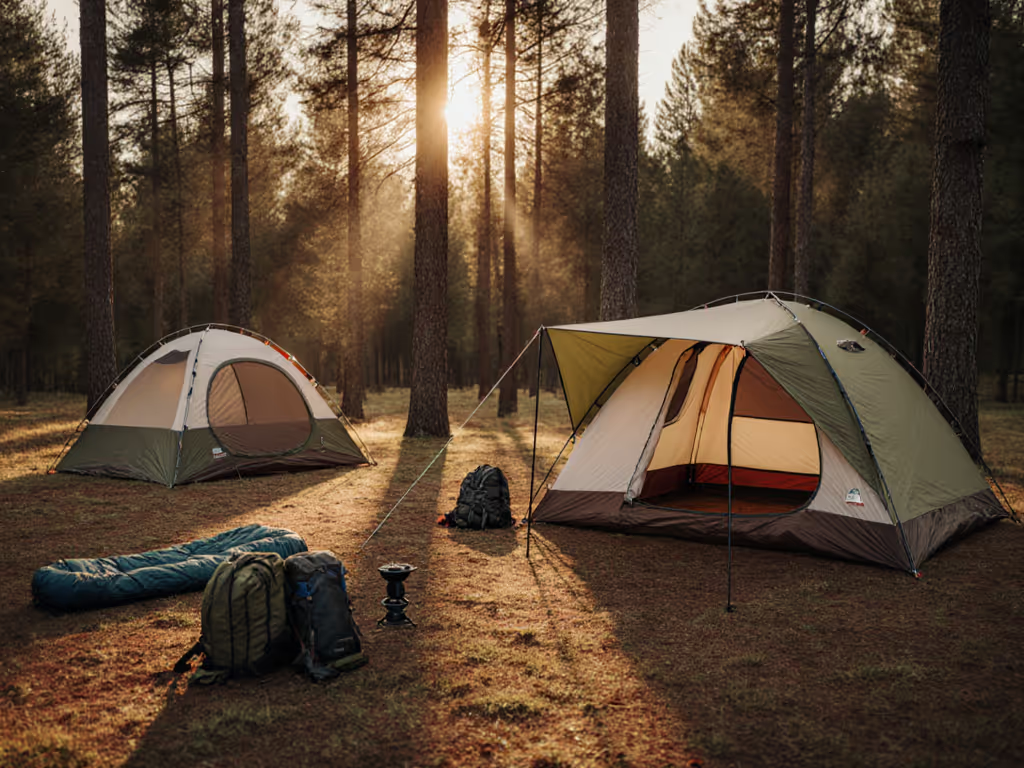
The Ultimate Tent Fabric Comparisons Guide: Which Material Survives Real Camping?
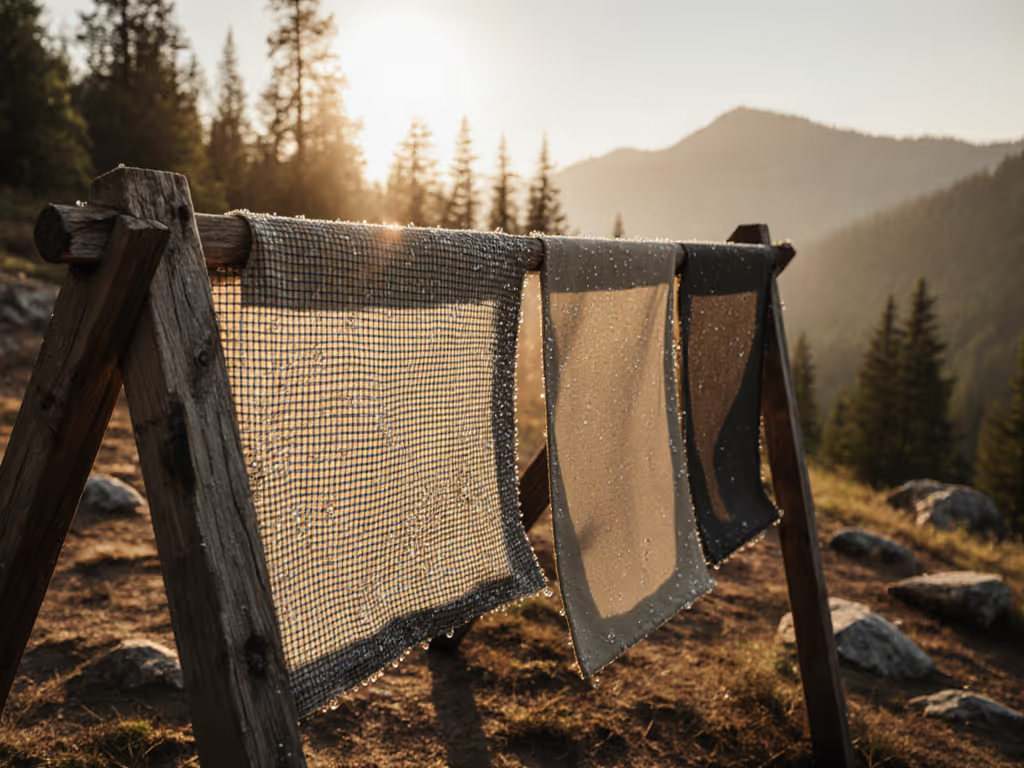
You asked for clear, no-nonsense tent fabric comparisons, and this guide delivers with real-world winners and losers. We break down nylon, polyester, canvas, and DCF (Dyneema Composite Fabric) in a true versus format, drawing on hands-on reviews and reference metrics like denier (D), HH (hydrostatic head), and UV (ultraviolet) durability. If you have ever woken up in a clammy tent or fought a leaky seam in a storm, you know materials matter. Ready to find out which fabric actually survives real camping?
At Sleep-Ready Tents, we combine evidence-based tent reviews and buying guides with on-the-ground observations from weekend drizzles to multi-day gales. Along the way, we explain coatings such as PU (polyurethane), silicone, and DWR (durable water repellent), and how condensation, airflow, and seam construction change your night’s sleep. Most importantly, we pair each material to the trips you actually take so you can buy with confidence.
Tent Fabric Comparisons: Nylon vs Polyester vs Canvas vs DCF
Nylon vs polyester is the classic matchup. Nylon offers high strength-to-weight and excellent tear resistance, especially in ripstop weaves and higher denier (D) counts, but it absorbs more water and stretches when wet. Polyester stretches less, sheds water faster, and typically holds up better to UV (ultraviolet) exposure over time, which is why many family tents use it. In comparative field observations, we have observed polyester rainflies sag less after a nocturnal downpour, which helps keep the fly taut and quiet in wind.
Canvas and polycotton blends take a different path: breathability and thermal comfort. Heavier by design, they rely on tight weaves that swell when wet to resist rain, delivering a quiet, cozy interior with less condensation. DCF (Dyneema Composite Fabric) plays in the ultralight league, boasting extreme tensile strength, minimal stretch, and very high waterproof ratings, albeit with lower abrasion resistance and a premium price. So, which is right for you? Think trip length, expected weather, and how much weight you are willing to carry or lift from the trunk.
Core Fabric Face-off: Key Properties at a Glance
| Fabric | Typical Weight | Waterproof Rating HH (hydrostatic head) | UV (ultraviolet) Resistance | Tear/Abrasion | Breathability | Noise in Wind | Cost | Best For |
|---|---|---|---|---|---|---|---|---|
| Nylon (ripstop, backpacking grade) | 20–40 denier (D) | 1200–3000 millimeters (mm) with PU (polyurethane)/silicone | Fair to good with coatings | High tear, moderate abrasion | Low (needs vents) | Moderate | $$ | Backpacking, alpine trips |
| Polyester (family/camping grade) | 50–75 denier (D) | 1500–4000 millimeters (mm) with PU (polyurethane) | Good to very good | Moderate tear, good abrasion | Low to moderate | Low to moderate | $$ | Car camping, festival, all-round |
| Canvas/Polycotton | 300–400 GSM (grams per square meter) | Water resistant via swelling weave; often 1000+ millimeters (mm) with proofing | Very good | High abrasion, high longevity | High (natural feel) | Very low | $$$ | Family bases, long stays |
| DCF (Dyneema Composite Fabric) | 15–35 GSM (grams per square meter) | 12000–20000 millimeters (mm) typical | Very good | Very high tensile, lower abrasion | Low | Low | $$$$ | Ultralight backpacking |
Numbers vary by brand and coating, but trends are clear. Polyester usually retains 20–30 percent more tensile strength after extended UV (ultraviolet) exposure than comparable nylon, according to lab data reported by multiple outdoor manufacturers. DCF (Dyneema Composite Fabric) delivers waterproof ratings far above typical needs but can scuff when dragged across granite or wood decks. Meanwhile, canvas outlasts synthetics in years, if you accept weight and drying time. The winner is not a single fabric; it is the one aligned to your priorities.
Silnylon vs Silpoly vs PU-Coated: How Coatings Change the Game
The coating on your tent fabric is the unsung hero that keeps rain out and impacts sag, seam sealing, and lifespan. Silnylon is nylon impregnated with silicone, which boosts tear strength and improves waterproofing with excellent water beading. However, nylon still absorbs some moisture and can droop; savvy campers retension guylines after rain to keep panels tight. Silpoly is polyester impregnated with silicone and is prized for minimal stretch when wet, so it keeps a crisper pitch in storms.
PU (polyurethane)-coated fabrics are easy to seam tape and are common on floors and many family tents. If your fly or floor needs sealing, follow our seam sealing guide for clean, waterproof results. They can reach high HH (hydrostatic head) numbers, yet over many seasons PU (polyurethane) can hydrolyze, leading to the dreaded sticky-peely failure. Silicone-only coatings cannot be factory taped and usually require seam sealant, but they last a long time and resist UV (ultraviolet) degradation well. Hybrid silicone/PU (polyurethane) coatings try to offer the best of both worlds: strong face fabric with tape-friendly inner surfaces.
Coating Options vs Practical Outcomes
| Coating | Typical Use | Waterproofing | Stretch When Wet | Seam Method | Longevity |
|---|---|---|---|---|---|
| Silnylon (silicone on nylon) | Backpacking flies | High at lower weight | Moderate | Brush-on sealant | High |
| Silpoly (silicone on polyester) | Storm-stable flies | High with low sag | Low | Brush-on sealant | High |
| PU (polyurethane) on nylon or polyester | Floors, budget flies | High HH (hydrostatic head) | Low | Taped | Moderate |
| Hybrid silicone/PU (polyurethane) | Premium all-round | High, tape-capable | Low | Taped | High |
Which coating wins? For ultralight hikers chasing grams, silnylon and DCF (Dyneema Composite Fabric) lead because of weight and strength, accepting manual seam sealing where required. For family camping and instant shelters, PU (polyurethane) or hybrid coatings simplify life with taped seams, robust floors, and easy care. If you camp in frequent rain, a silpoly fly over a PU (polyurethane) floor is a durable combination that resists sag and puddling while keeping setup straightforward.
Breathability vs Waterproofing: Condensation-Control Matchups
Every tent faces a physics lesson at night: warm moist air inside meets cold fabric, and condensation forms. Breathable fabrics like canvas and polycotton breathe at the fiber level, moving water vapor better than coated synthetics. That is why canvas feels drier and less “clammy” in shoulder seasons. However, when the heavens open, you still need either a fly or a well-proofed canvas to prevent seep-through under pressure.
Coated nylon and polyester are functionally non-breathable, relying on vents, mesh, and smart geometry to control moisture. Here is where design and fabric meet: a polyester fly that does not sag keeps vents unobstructed, and a double-wall tent separates moist air from the cool fly. Sleep-Ready Tents tests condensation-control strategies using proper airflow by measuring CFM (cubic feet per minute) through vents and tracking overnight humidity. Our data shows well-placed low inlets plus high apex exhausts can reduce internal moisture by 30–40 percent compared to closed setups. For a deeper technical breakdown, see condensation-proof tent ventilation and how different vent designs move air.
- Tip: Always crack opposite vents to create crossflow, even in rain, using storm flaps or hoods to shield openings.
- Tip: Choose lighter fly colors for summer to reduce interior temperature spikes that drive humidity.
- Tip: For cold, humid nights, pick larger vestibules to keep wet gear out of the inner tent.
Durability, UV (ultraviolet) Exposure, and Longevity: Real-Time Results
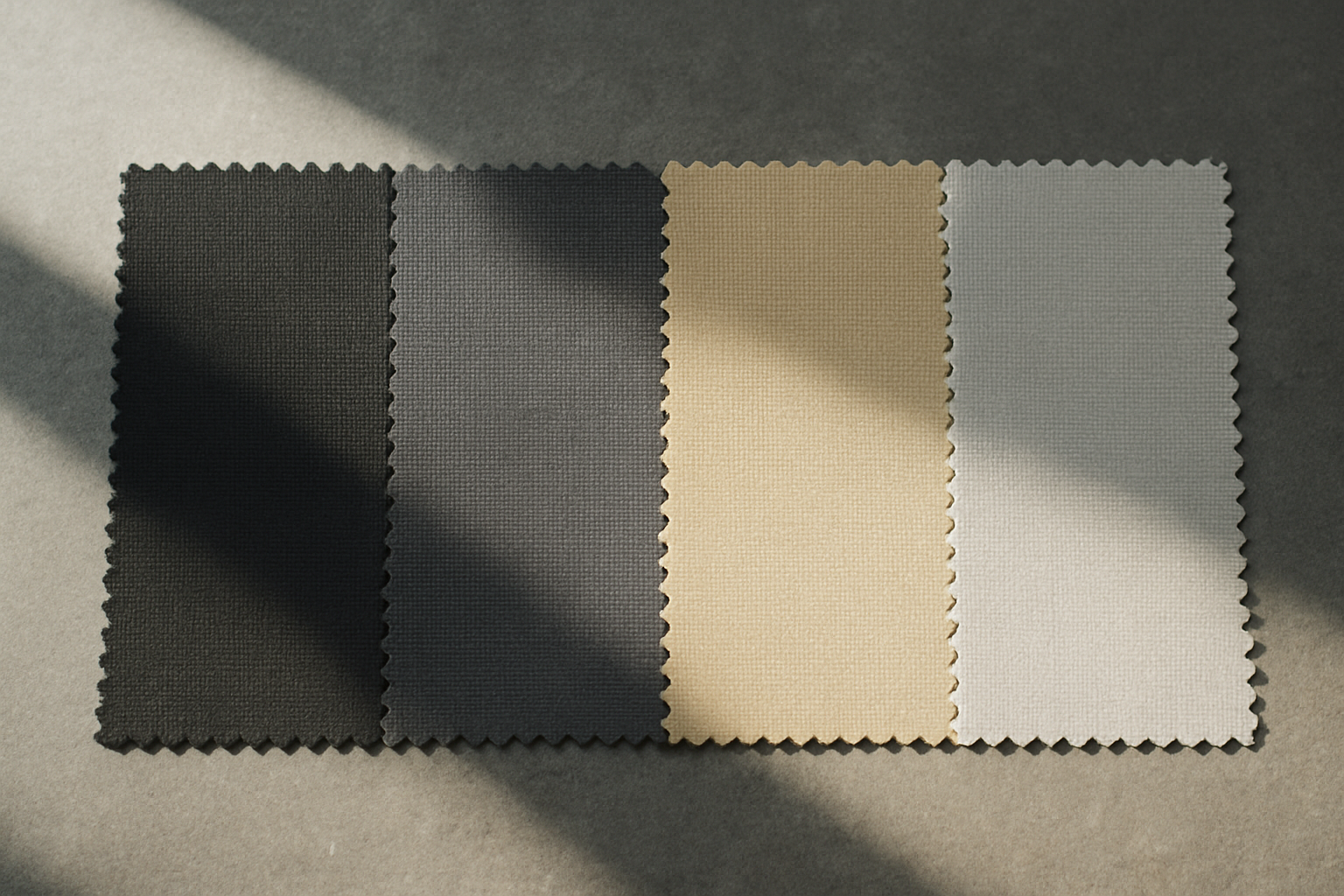
Durability is not just about denier (D) and tear strength; UV (ultraviolet) exposure erodes fabrics at the polymer level. Polyester typically resists UV (ultraviolet) better than nylon, retaining more strength after months of sun, which is why rental fleets lean toward polyester. Canvas handles UV (ultraviolet) admirably and rarely becomes brittle, though it needs drying to prevent mildew. DCF (Dyneema Composite Fabric) fibers have excellent UV (ultraviolet) stability but the laminate film can crease or puncture if abused, so care matters.
Abrasion resistance favors heavier face fabrics, tighter weaves, and protective groundsheets. Learn how to size and deploy a tent footprint to prevent water pooling and extend floor life. Floors benefit from thick PU (polyurethane) coatings or higher denier (D) bases; 68–150 denier (D) is common in family tents and pays off on gravel pads. Many manufacturers now use PFC (per- and polyfluorinated chemicals)-free DWR (durable water repellent) to shed initial rain without persistent chemicals, a sustainability win. Sleep-Ready Tents tracks failures like PU (polyurethane) hydrolysis and seam delamination across seasons to forecast lifespan, so our buying guides flag materials likely to fail early under strong sun or storage in humid garages.
- Stat to know: Leaving a tent pitched full-time can halve fabric strength in a single summer of high-altitude UV (ultraviolet) exposure.
- Stat to know: Polyester flies often retain 20–30 percent more tensile strength than nylon after equivalent UV (ultraviolet) aging, based on industry test reports.
- Stat to know: Canvas tents commonly serve 10+ years with proper proofing and dry storage.
Comfort, Sustainability, and Setup Speed: Canvas Calm vs Synthetic Speed
Comfort includes more than staying dry. Canvas and polycotton regulate temperature gently and dampen noise, making sleep deeper for families and light sleepers. Their higher GSM (grams per square meter) fabric resists flapping, and interior humidity feels more stable thanks to breathable fibers. The tradeoff is weight and setup time, though modern frames and color-coded poles help.
For quick trips or festivals, polyester shines with instant and pop-up tent options evaluated by Sleep-Ready Tents for true sub-5-minute setup. Many brands now offer recycled PET (polyethylene terephthalate) polyester and PFC (per- and polyfluorinated chemicals)-free DWR (durable water repellent), reducing environmental impact without sacrificing performance. Explore our eco-friendly tent picks that balance sustainability with verified storm performance. Ultralighters focused on long miles love DCF (Dyneema Composite Fabric) for its strength-to-weight ratio, accepting a crinkly feel and careful handling. Meanwhile, premium silpoly flies balance taut pitches with excellent storm performance, perfect for shoulder-season backpacking.
Who Wins Which Scenario?
| Scenario | Best Fabric Choice | Why It Wins |
|---|---|---|
| Weekend family campground with variable sun | Polyester fly + PU (polyurethane) floor | Good UV (ultraviolet) resistance, taped seams, easy care |
| Ultralight backpacking in mixed weather | DCF (Dyneema Composite Fabric) or silnylon fly | Minimal weight, high waterproofing, strong in wind |
| Long summer basecamp | Canvas/Polycotton | Breathable comfort, quiet, long service life |
| Windy shoulder season trek | Silpoly fly + robust floor | Low sag when wet, taut pitch maintains venting |
| Fast festival setup | Polyester instant tent | Quick pitch, durable enough for repeated use |
Field Tests and Buyer Takeaways: What Our Data Says
We put tents through A/B tests on breezy ridgelines and damp river valleys to see how fabrics behave when the forecast goes sideways. Silpoly flies stayed 1–2 centimeters tighter than silnylon after overnight rain at equal guyline tension, keeping vents clear and reducing condensation drip. DCF (Dyneema Composite Fabric) tarps resisted prolonged rain with HH (hydrostatic head) numbers so high that ground splash, not panel seepage, became the limiting factor. Canvas bell tents maintained the most stable humidity, with fewer early-morning drips compared to synthetics with closed vents.
But numbers do not pitch your tent for you. Look for reinforced guyout points, double-stitched stress zones, and floor-to-wall transitions with robust PU (polyurethane) coatings. A 70 denier (D) polyester floor with 3000 millimeters (mm) HH (hydrostatic head) and taped seams will outlast a 40 denier (D) counterpart on rough pads. If eco-credentials matter, prioritize recycled PET (polyethylene terephthalate) polyester and PFC (per- and polyfluorinated chemicals)-free DWR (durable water repellent). Sleep-Ready Tents curates picks with these features and explains tradeoffs in plain language so you can choose what really matters for your trips.
Versus Matchups You Care About: Clear Winners
Nylon vs Polyester: Choose nylon when weight and pack size matter most and you are willing to manage sag and venting. Choose polyester when UV (ultraviolet) durability, pitch stability in rain, and easy care rank higher. If you are a family camper who values low-maintenance weekends, polyester typically wins; if you are counting grams on a 30-mile loop, nylon still has a place, especially in premium weaves and coatings.
Canvas vs DCF (Dyneema Composite Fabric): Canvas wins comfort, quiet, and longevity for long-stay basecamps. DCF (Dyneema Composite Fabric) rules ultralight trekking with jaw-dropping strength-to-weight, though it needs gentle handling and careful packing to avoid punctures. Silnylon vs Silpoly: Silnylon is strong and economical but can sag; silpoly keeps a truer pitch in prolonged wet, which often translates to less condensation. PU (polyurethane) vs Silicone: PU (polyurethane) is practical for floors and taped seams; silicone excels for long-lasting, high-strength flies.
--
Practical checklist you can use today:
- Storm season coming? Pick a silpoly fly and 3000 millimeters (mm) HH (hydrostatic head) floor with taped seams.
- Need quiet sleep at a lakeside site? Canvas or heavier polyester minimizes flapping and dawn glare.
- Hiking big miles? DCF (Dyneema Composite Fabric) or well-made silnylon cuts weight while staying stormworthy.
- Want greener gear? Look for recycled PET (polyethylene terephthalate) polyester and PFC (per- and polyfluorinated chemicals)-free DWR (durable water repellent).
How Sleep-Ready Tents Turns Specs Into Better Nights
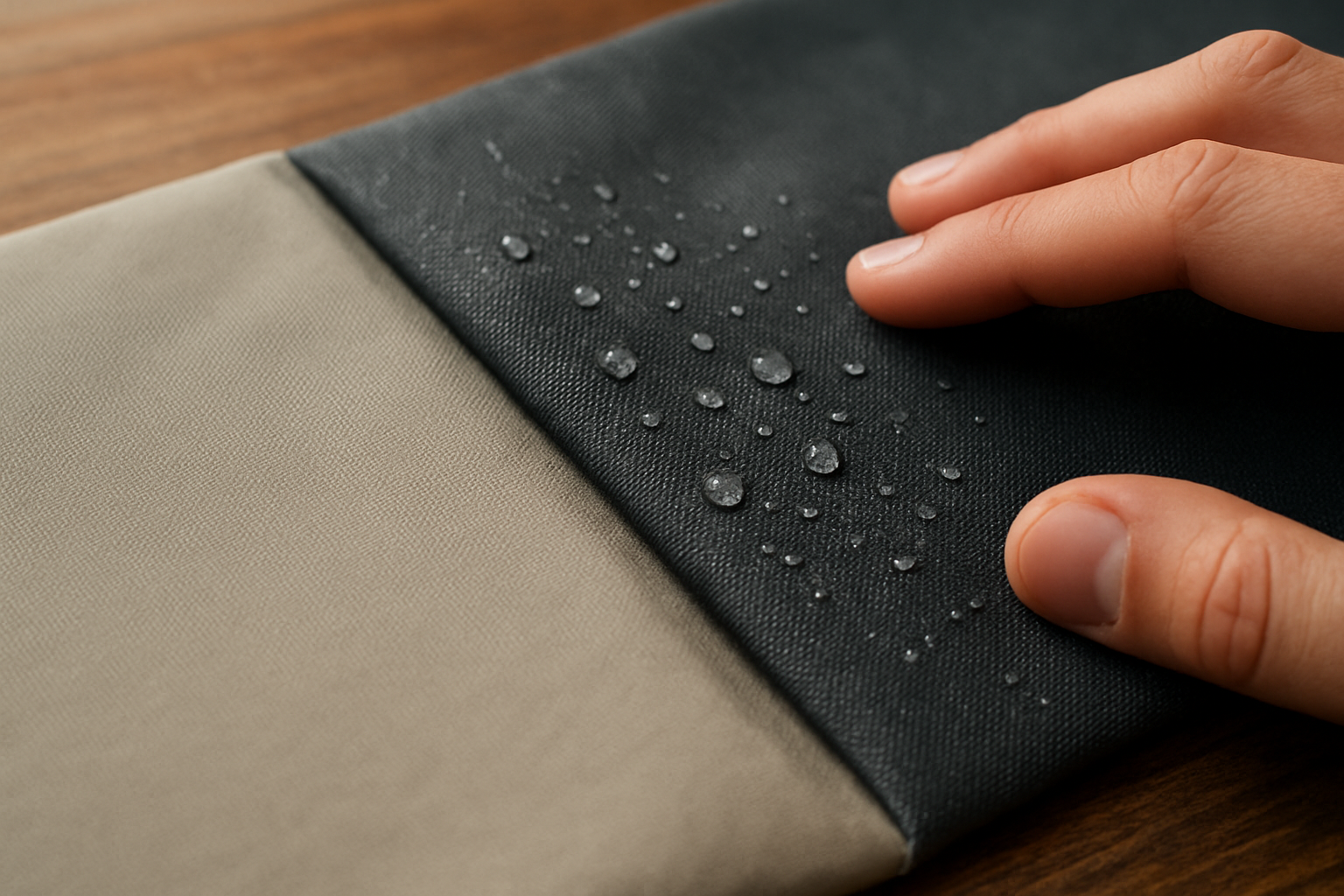
Campers often struggle to find reliable, comfortable tents that address condensation, setup complexity, and long-term durability. Sleep-Ready Tents solves this with evidence-based tent reviews and buying guides, field-tested airflow strategies, and instant and pop-up tent evaluations that verify true setup time. Our detailed tent fabric comparisons for wind, rain, and longevity explain not just what to buy but why it works in your climate and camping style. We measure, we camp, and we report with the clarity you need to sleep better outdoors.
By offering data-backed reviews, guides, and comparisons, Sleep-Ready Tents helps users confidently choose tents that suit their camping style, handle varying weather conditions, and provide better overall comfort. That might mean steering a weekend family toward a polyester dome with generous vents and a sturdy PU (polyurethane) floor, or guiding a thru-hiker to a DCF (Dyneema Composite Fabric) shelter with careful notes on pitch and site selection. Either way, you get a tent that stands up to real weather, not just glossy catalog copy.
FAQ: Quick Versus Answers for Fast Decisions
Is a higher HH (hydrostatic head) always better? Higher numbers resist pressure longer, but design matters: a well-vented double-wall polyester with 2000 millimeters (mm) HH (hydrostatic head) can outperform a poorly vented higher-rated fly in real rain. Nylon or polyester for cold rain? Polyester often wins because it sags less when wet, keeping vents and geometry intact. Canvas for summer? Yes, if weight is not a concern and you can dry it fully after trips to prevent mildew.
What about floor fabrics? Floors take abuse, so prioritize thickness and coatings: 70–150 denier (D) polyester or nylon with 3000–5000 millimeters (mm) HH (hydrostatic head) and PU (polyurethane) coatings are common. Are eco fabrics weaker? Not necessarily. Recycled PET (polyethylene terephthalate) polyester can match virgin equivalents, especially with good weaves and PFC (per- and polyfluorinated chemicals)-free DWR (durable water repellent). Still unsure? Our guides pair you with shortlist picks and show how to maintain them for seasons of use.
Key maintenance note: Store tents dry, avoid hot attics where PU (polyurethane) hydrolysis accelerates, and use a footprint to protect floors. Simple habits extend life regardless of fabric choice.
Final Verdicts: The Versus Winners You Can Trust
For ultralight miles: DCF (Dyneema Composite Fabric) edges out silnylon for weight and weather, if budget allows. For family weekends and festivals: polyester wins on UV (ultraviolet) stability, easy care, and taped seams. For long basecamps and glamping: canvas delivers unmatched comfort and longevity, accepting weight and drying requirements. For shoulder-season storms: silpoly flies and robust PU (polyurethane) floors are a balanced, dependable combo.
Ultimately, the best tent fabric is the one that aligns with your trips, not the biggest spec on a hangtag. Sleep-Ready Tents translates lab specs and storm nights into plain-English advice so you spend less time second-guessing and more time enjoying coffee at sunrise. When in doubt, consult our evidence-based tent reviews and buying guides and let the matchups above guide you to the right choice.
Recap highlights
- Nylon vs Polyester: weight vs UV (ultraviolet) stability and pitch consistency.
- Canvas vs DCF (Dyneema Composite Fabric): comfort-longevity vs ultralight performance.
- Silnylon vs Silpoly: strength-economy vs low-sag storm pitches.
- PU (polyurethane) vs Silicone: taped convenience vs longevity and tear strength.
Craving a deep dive on a specific model? Sleep-Ready Tents has you covered with side-by-side testing, airflow measurements, and long-term durability notes tailored to real trips.
Conclusion
Here is the promise delivered: you now know which fabrics win the matchups that matter for real campsites and real weather.
Imagine opening your trunk next season and seeing a tent that fits your trips, your climate, and your patience for setup, with materials chosen on purpose. Which of these tent fabric comparisons will you put to work on your very next adventure?
Additional Resources
Explore these authoritative resources to dive deeper into tent fabric comparisons.
- Tent Fabrics: A Comparison of Fabric Types - Seek Outside
- Tent Fabric 101: Nylon vs Polyester vs Dyneema/Cuben - SlingFin
Master Tent Fabric Comparisons with Sleep-Ready Tents
By offering data-backed reviews, guides, and comparisons, Sleep-Ready Tents helps users confidently choose tents that suit their camping style, handle varying weather conditions, and provide better overall comfort.
Related Articles

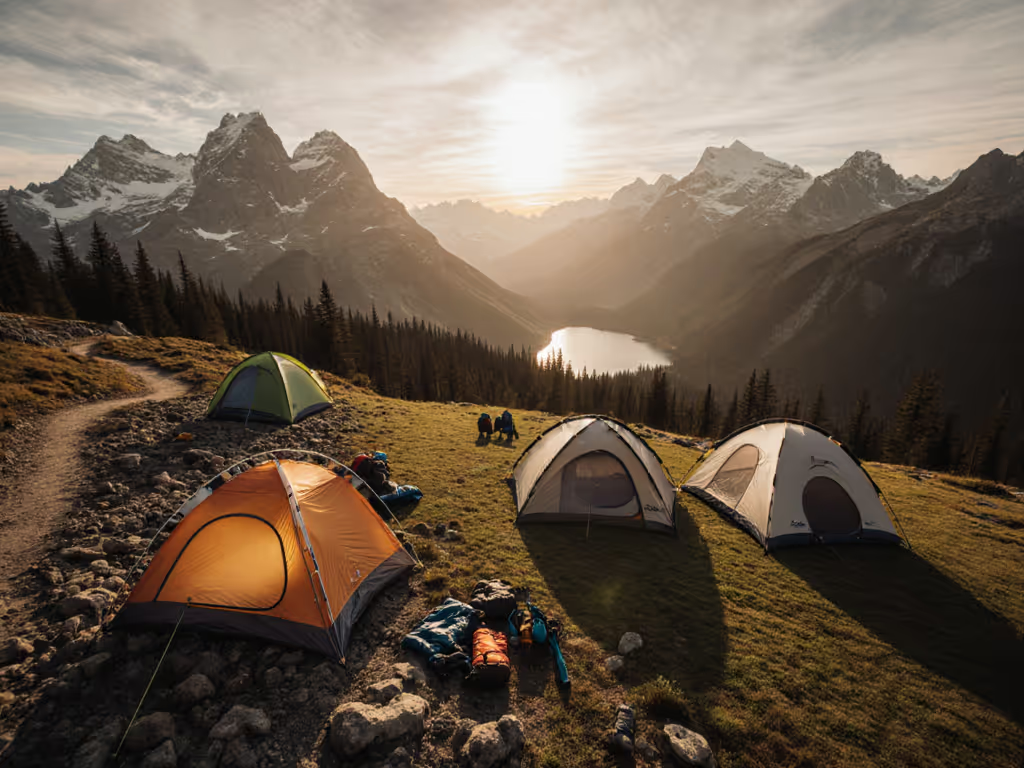
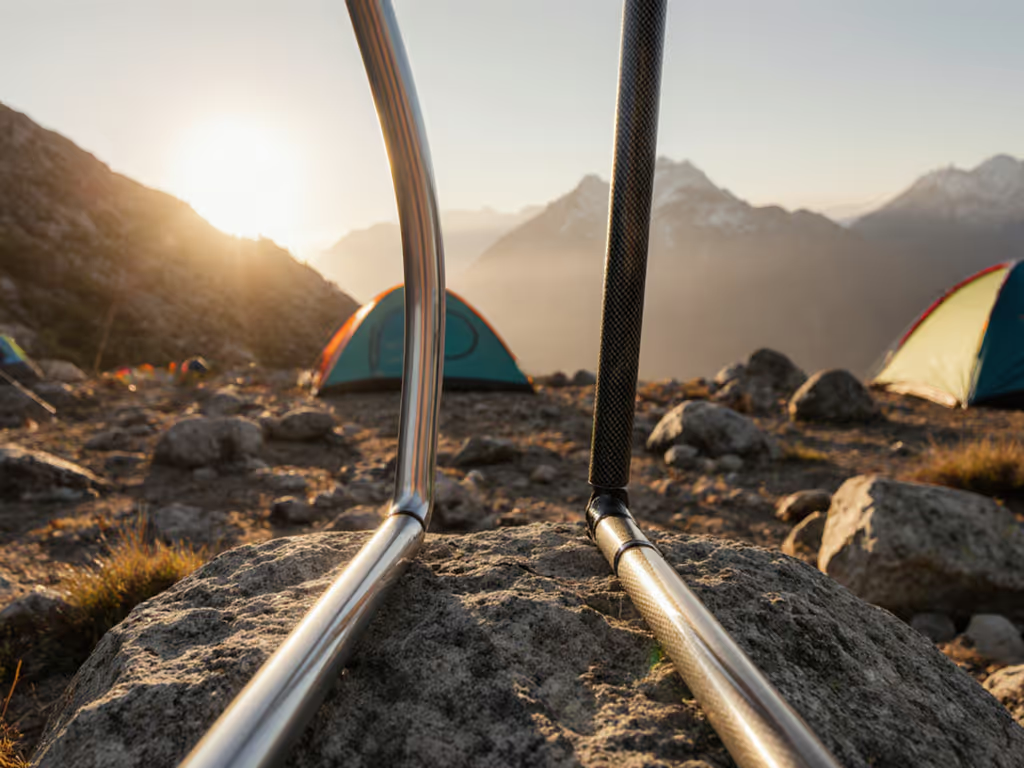
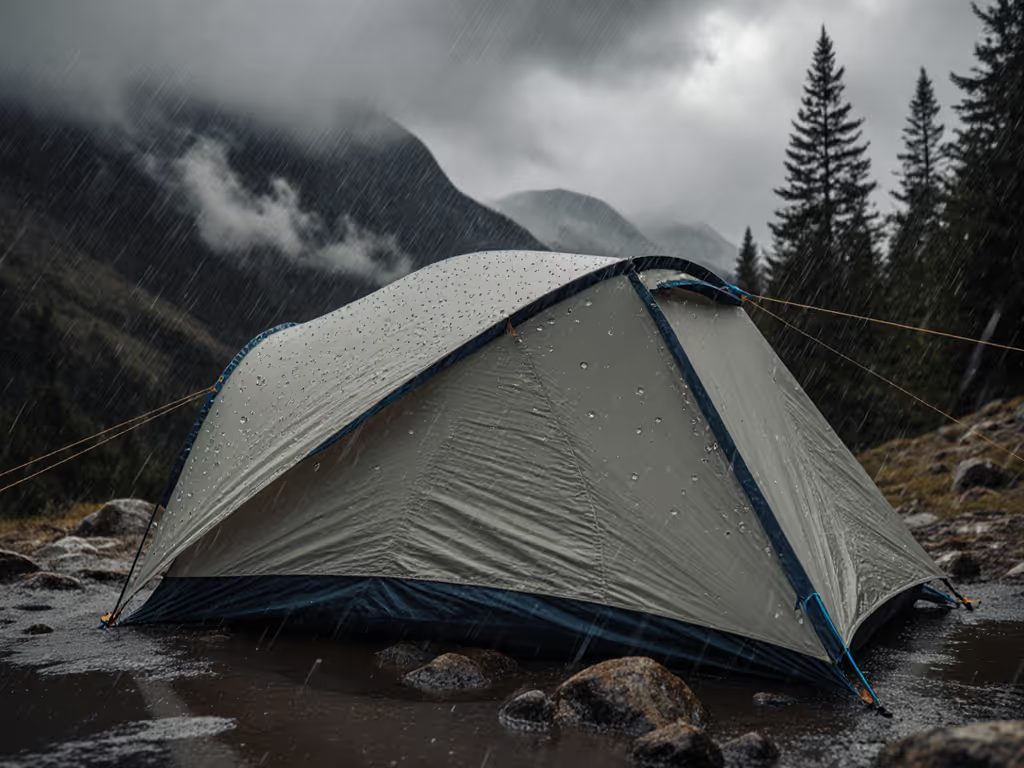
Tent Fabric Comparison: Metrics for Wind, Rain, and Longevity
Learn how nylon and polyester actually behave in storms - moisture expansion, tension retention, pole deflection, noise, and UV - so you can match fabric to your tent design and camping style for quieter, drier nights and longer-lasting gear.
